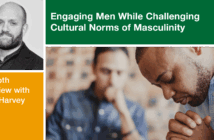Ann Michel of the Lewis Center staff points to six positive factors that may offer clues to churches seeking a way forward in an environment shaped by so many discouraging trends and challenges.
Do you feel barraged by the discouraging trends and challenging circumstances defining church life today? Aging clergy. Denominational struggles. Decreasing average worship attendance. Worrisome giving trends. The rise of the Nones. I’ve spilt a lot of ink alerting church leaders to these troubling trends and others. But recently I’ve started taking note of some silver linings hidden within these clouds of doom and gloom. These rays of hope don’t negate the overarching trends that still warrant our attention. But they may offer some positive clues for moving forward or at least a modest dose of optimism to buoy us as we navigate choppy waters.
1. Fewer people come to church today out of obligation or social convention.
The flipside of fewer people in the pews on any given Sunday is that the people still there are more likely to come out of genuine interest, need, or commitment. Fewer people today attend church just because they feel they must. While we should never be content merely preaching to the choir, it’s worth asking, “How can we build on the strength of having a higher percentage of motivated and committed people in our pews?”
2. Some false narratives about declining attendance are falling away.
In the 1980s and ‘90s, progressive mainline churches seemed to be careening down the decline curve at the same time conservative megachurches were booming. And a lot of people placed the blame on liberal theology and social activism. But things look different now that declining worship attendance has caught up with evangelicals and U.S. Catholics as well. This, of course, is not good news. But it helps us see church attendance patterns through the lens of broader cultural trends such as increasing secularization and declining birthrates, which impacted the mainline before other sectors of the American church. And this prompts the question, “How can setting aside false narratives free us to focus on our unique strengths?”
3. Some people outside the church are more religious than we think.
While a growing segment of our population is religiously unaffiliated, not all are not wholly secular. Pew research on the Nones (Religion and the Unaffiliated, Pew Research Center, October 2012) found that two-thirds believe in God, one in five prays daily, and a third classify themselves as spiritual but not religious. It’s tempting to dismiss people who don’t regularly attend church as irreligious or spiritually apathetic, but many may be open to spiritual experiences. Some have deeply engrained religious memories connected to certain church traditions. So, the question becomes, “How can we connect with these spiritual impulses and help people reclaim their religious memories before they fade away entirely?”
4. People may get more religious as they age.
Again, looking to Pew Research, in 2018 they reported that “religious attachments tend to peak during adolescence, decline through young and middle adulthood, and then increase through most of late adulthood.” (Why do levels of religious observance vary by age and country? Pew Research Center, June 13, 2018) They cite other studies indicating people attend worship more frequently as they move into their retirement years. While there are certainly many factors at play, these findings prompt the question, “How can we help the millennials find their way back to church as they get older?”
5. Americans still hold positive views about religion’s role in society.
In November of this year, Pew Research released yet another poll suggesting that there is still a broad tendency for Americans to see religion as a force for good. (Americans Have Positive Views About Religion’s Role in Society, but Want It Out of Politics, Pew Research Center, November 5, 2019.) Fifty-five percent say churches and religious organizations do more good than harm; fifty-three percent say religious organizations strengthen morality in society; 50 percent say religion brings people together; and more than four in ten adults are concerned about the waning influence of religion in American life. The exception is in the area of politics where large majorities felt religious groups should stay out of politics, particularly electoral politics. So, we need to ask, “How can we capitalize on the goodwill people feel toward religion to move them toward religious participation?”
6. Churches still have the homefield advantage when it comes to giving.
In the past 30 years, giving to religious causes has declined significantly as a percentage of overall charitable giving. Yet giving to religious causes, which totaled $124.52 billion in 2018, is still the largest sector by far, accounting for 29 percent of the total. (See Giving to Religion in 2018.) Moreover, the Lake Institute on Faith and Giving (National Study on Congregations’ Economic Practices, 2019) found that revenue is up in 48 percent of congregations compared to three years earlier. Churches still have a huge homefield advantage compared to other nonprofits because they regularly see their donors face to face. The question is, “How can churches use this advantage instead of squandering it?”
Nothing in these facts or findings suggests that churches can rest easy. But they do raise important questions about how congregations can use these resiliencies to move beyond challenging circumstances.
Related Resources
- Changes Congregations Face Leadership Study by the Lewis Center for Church Leadership
- 5 Emerging Trends Impacting Church Life by Doug Powe and Ann A. Michel
- Discovering God’s Future for Your Church Video Tool Kit






